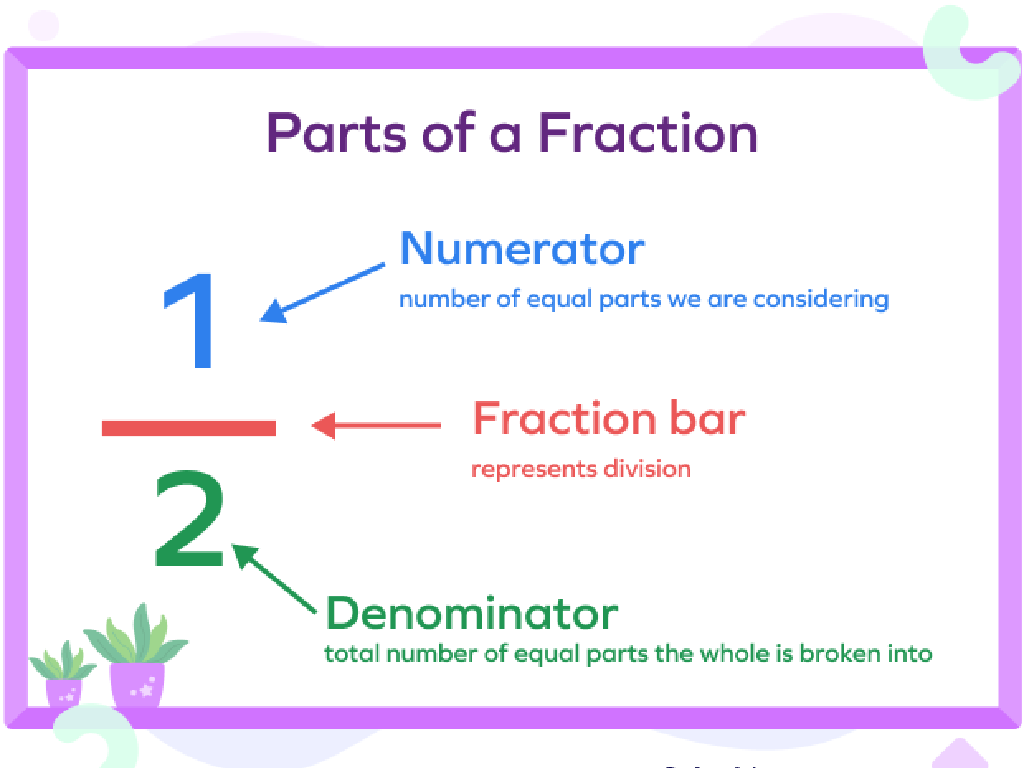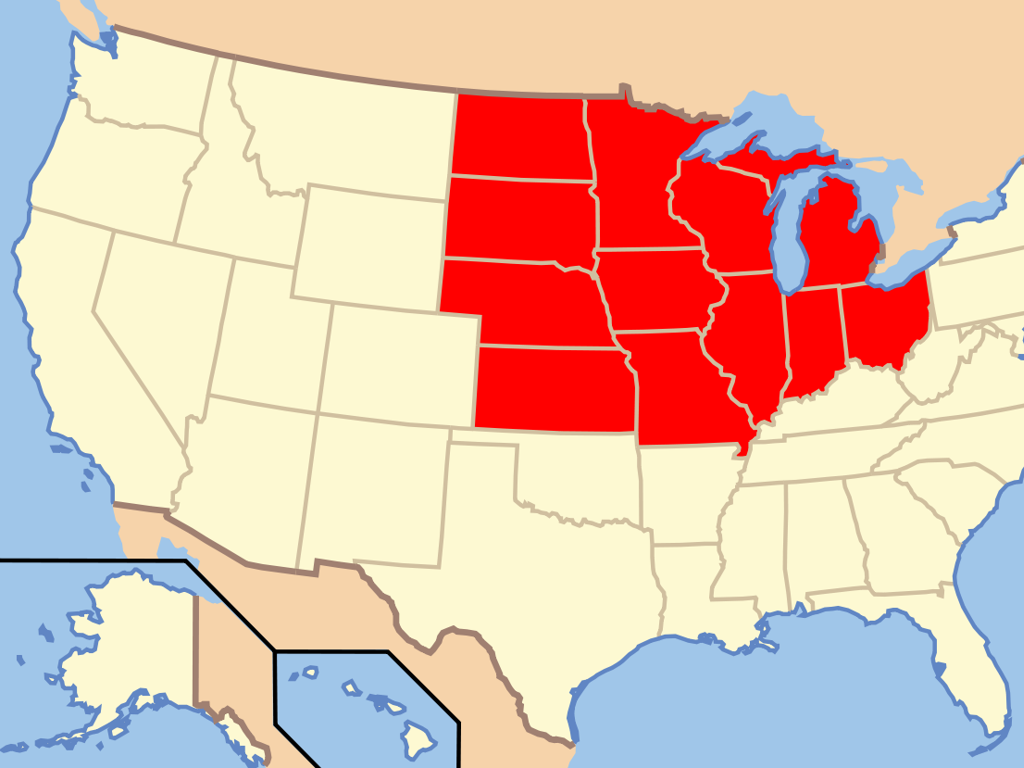Angles Greater Than, Less Than, Or Equal To A Right Angle
Subject: Math
Grade: Third grade
Topic: Lines And Angles
Please LOG IN to download the presentation. Access is available to registered users only.
View More Content
Exploring Angles in Our World
– What are angles?
– An angle is where two lines meet. Think of the hands of a clock!
– Types of angles
– Right angles are like corners of a book. Acute angles are smaller, and obtuse angles are bigger.
– Spotting angles around us
– Look for angles in buildings, furniture, and playgrounds.
– Measuring angles
– Use a protractor to see if angles are greater than, less than, or equal to 90 degrees.
|
Begin the lesson by defining angles and their importance. Explain that angles are formed when two lines meet at a point. Use everyday objects like a clock to illustrate this concept. Introduce the three types of angles: acute, right, and obtuse. Provide clear examples for each, such as a book corner for a right angle. Encourage students to observe their environment to find angles in real life, reinforcing the idea that math is everywhere. Lastly, introduce the protractor as a tool for measuring angles, and explain that it helps us determine the size of an angle in degrees. Plan a hands-on activity where students can use a protractor to measure angles in the classroom.
Exploring Angles
– What is an angle?
– It’s the shape made by two lines starting from the same point
– Angles are where lines meet
– Imagine two arms of a clock meeting at the center
– Space between lines is the angle
– Like a slice of pizza or a corner of a book
– Angles measured in degrees
– We use a special unit called degrees to tell the size
|
Begin by explaining that an angle is a space between two lines that start from the same point, much like the hands of a clock or the corners of a book. Use everyday objects to help students visualize angles. Emphasize that angles are measured in degrees, which helps us know how wide or narrow the angle is. Show them a protractor, a tool for measuring angles, and explain that we’ll learn how to use it to measure different angles. Encourage students to think of examples of angles they see around them every day.
Exploring Right Angles
– What is a right angle?
– A right angle equals 90 degrees
– Right angles in shapes
– Corners of squares and rectangles
– Right angles around us
– Classroom examples: book corners, doors
– Measuring right angles
|
This slide introduces students to the concept of right angles as a foundational element of geometry. Begin by explaining that a right angle is exactly 90 degrees, which is a quarter turn. Show them how it looks by pointing to the corners of squares and rectangles, common shapes that have right angles. Then, engage the students by identifying right angles in the classroom, such as the corners of books, desks, and where the wall meets the floor. Encourage students to use a protractor to measure and verify right angles, reinforcing the concept through hands-on activity. This will help them recognize right angles in various objects and understand their significance in geometry.
Exploring Acute Angles
– Acute angles are less than 90 degrees
– They look sharp or small
– Think of the point of a sharp pencil or a pizza slice
– Find acute angles around us
– Look at corners of books, desks, or even your hands
– Classroom acute angle hunt
– We’ll search for acute angles in our classroom together
|
This slide introduces students to acute angles, which are angles smaller than a right angle (less than 90 degrees). Use relatable examples like the sharpness of a pencil point or the shape of a pizza slice to help them visualize. Encourage students to observe their surroundings and identify acute angles in everyday objects. Organize a fun activity where students can move around the classroom to find and point out acute angles, such as the corners of a book or the angle between the hands of a clock. This interactive approach helps solidify their understanding of acute angles in a practical and engaging way.
Exploring Angles: Obtuse Angles
– What are obtuse angles?
– Angles larger than a right angle (90°) are obtuse
– Obtuse angles are wider than 90 degrees
– Think of an obtuse angle as a wide, open space
– Recognizing obtuse angles around us
– Look for angles bigger than a corner of a square
– Obtuse angles in real life
– Examples: a slice of pizza, the hands of a clock at 10:10
|
This slide introduces students to obtuse angles, which are angles greater than 90 degrees. Explain that a right angle is like the corner of a square or the letter ‘L’, and any angle that is wider or larger than this is obtuse. Use tangible examples that students can relate to, such as a slice of pizza or the hands on a clock showing 10:10, to help them identify obtuse angles in everyday life. Encourage students to find and draw obtuse angles they observe in the classroom or at home. This will help solidify their understanding of the concept and how it applies to the world around them.
Comparing Angles: Acute, Right, or Obtuse
– Identifying acute, right, and obtuse angles
– Acute: smaller than a right angle, Right: equal to the corner of a square, Obtuse: larger than a right angle
– Measuring angles with a protractor
– Place the center of the protractor at the vertex, align one ray with the zero line, and read the measurement where the second ray crosses the number scale
– Guessing angles before measuring
– Look at an angle and decide if it’s acute, right, or obtuse before using the protractor
– Practice makes perfect
|
Begin by explaining the different types of angles: acute (less than 90 degrees), right (exactly 90 degrees), and obtuse (more than 90 degrees). Use everyday examples like the corner of a book for a right angle, or the hands of a clock for acute and obtuse angles. Demonstrate how to use a protractor to measure angles accurately. Encourage students to first guess the type of angle to develop their estimation skills, which is a fun and engaging way to learn. Provide plenty of practice opportunities with different angles to reinforce learning. Remember, hands-on practice is key in understanding geometry concepts.
Class Activity: Angle Hunt
– Explore angles in the classroom
– Measure angles with a protractor
– Use the protractor to find angles greater, less, or equal to 90 degrees
– Draw and label angles on worksheet
– Make sure to name the angles: acute, right, or obtuse
– Discuss findings with classmates
|
This interactive activity is designed to help students apply their knowledge of angles in a fun and engaging way. Provide each student with a protractor and a worksheet for drawing and labeling. Encourage them to explore the classroom to find various angles in objects like desks, shelves, and windows. They should use the protractor to measure the angles and determine if they are acute (less than 90 degrees), right (equal to 90 degrees), or obtuse (greater than 90 degrees). After the hunt, have students share their findings with the class to reinforce their understanding of angle types. Possible variations of the activity could include working in pairs, setting up angle stations, or even extending the hunt to the school hallways or playground.
Review and Share: Angle Adventures
– Recap today’s angle lessons
– We learned about acute, right, and obtuse angles.
– Share angles from our hunt
– Show the class the angles you found and where you found them.
– Discuss angles’ importance
– Why do angles matter in real life? Think buildings and objects!
– Reflect on learning angles
|
This slide aims to consolidate the day’s learning by reviewing the different types of angles: acute (less than 90 degrees), right (exactly 90 degrees), and obtuse (greater than 90 degrees). Encourage students to share the angles they discovered during the ‘angle hunt’ activity, fostering a collaborative learning environment. Discussing the importance of angles helps students connect mathematical concepts to the real world, such as in architecture and everyday objects. Use this opportunity to assess student understanding and to reinforce the day’s lessons. The reflection at the end allows students to internalize what they’ve learned about angles.
Angles Around Us: Homework
– Congrats on learning angles!
– Find 3 objects with angles at home
– Look for objects like a book, table, or door
– Draw and label the angles
– Is the angle greater, less than, or equal to a right angle?
– Share your drawings next class
|
This slide concludes the lesson on angles and transitions students into a practical homework assignment. The task reinforces their understanding by having them identify angles in everyday objects, encouraging them to apply their knowledge outside the classroom. Remind students to consider the types of angles they’ve learned about and to use proper labeling. In the next class, students will have the opportunity to present their findings, fostering a discussion on how angles are present in our daily environment. This activity also serves as an informal assessment of their grasp of the lesson’s concepts.





